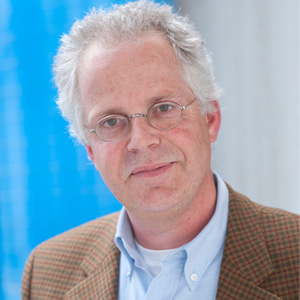Keynote Speakers
Prof. Dr. Ben Berkhout
Laboratory of Experimental Virology, Department of Medical Microbiology, Amsterdam University Medical CentersProfessor of Human Retrovirology, University of Amsterdam, The Netherlands
Speech Title: Towards an HIV cure based on CRISPR-Cas technology
Abstract: The human immunodeficiency virus (HIV) integrates its genome into that of the human host to cause a persistent infection that can be controlled by antiviral drugs, but that cannot be cured. CRISPR-Cas endonucleases can be instructed to cleave and inactivate the integrated proviral DNA genome. We observed many surprise findings along this route. For instance, it turned out that HIV escape is promoted by the cellular DNA repair machinery, which introduces small indels at the target site that trigger subsequent viral escape. When two HIV targets are attacked to realize excision of a large HIV segment, we observed instead that a regular indel is introduced at both targets. To explain this, we reasoned that the two cuts are not present simultaneously because of fast DNA repair. Novel kinetic experiments support this idea. Another surprise finding is that we can score a fair number of very large genome deletions that extend beyond the integrated HIV genome and that are potentially dangerous because of oncogene activation. Most studies will miss such products because of the used PCR-based detection methods. We will also discuss some technological developments, e.g. the development of novel expression cassettes for guide RNAs, Pol-III driven transcription units and novel lentivirus vector designs.
Keywords: HIV, CRISPR-Cas, Cure
Biography: Ben Berkhout studied molecular biology at Leiden University and obtained his PhD in 1986 on translational control by means of RNA structure in bacteriophages. He performed postdoctoral research at the Dana Farber Cancer Institute (Harvard Medical School) and the National Institutes of Health (USA). He became Head of the Laboratory of Experimental Virology and was appointed Professor of Human Retrovirology the University of Amsterdam in 2002. He supervised 55 PhD students and published over 600 manuscripts on HIV-1 replication, virus evolution, virus discovery and new antiviral therapeutic strategies. BB sits on many international science panels (e.g. ERC, RGC Hong Kong, NMRC Singapore), and is editor-in-chief of Virus Research and editor for several journals (e.g. Retrovirology).
Prof. Esteban Peña Pitarch
Universitat Politècnica de Catalunya (UPC), SpainSpeech Title: Virtual Human Hand Simulation
Abstract: Currently, there are numerous systems and models for the upper human body that aim, in some cases, to enhance object grasping and, in others, to perform repetitive grasping in manufacturing operations or loading and unloading processes within the industrial sector. On the other hand, there is the sophistication of robotic hands (a term used here to generalize the concept), which feature varying numbers of degrees of freedom and control systems of differing complexity for these degrees of freedom. But what happens when a hand disability arises, such as one caused by a stroke or paraplegia? In these instances, replacing the hand is unnecessary; instead, the priority is the restoration of hand functionality, with the goal of enabling the affected individual to carry out daily life activities as normally as possible.
Indeed, for all these scenarios, the most thorough understanding possible of the human hand is essential. To this end, the academic literature already includes several proposals for virtual models of the human hand. What is presented here is the outcome of several years of research on this topic: a proposed virtual model of the human hand featuring 29 degrees of freedom for the hand itself, plus an additional 9 degrees of freedom for the wrist.
Through the simulation of the human hand, the aim is twofold: on one hand, to provide tools for physicians and physiotherapists, enabling them to design personalized rehabilitation systems; on the other hand, to develop more accurate robotic hand models.
Biography: Esteban Peña Pitarch holds a doctorate in the UPC. He has carried out his teaching work at the Technical College of Manresa (EPSEM), since 1988 and belongs to the department of mechanical engineering. He collaborates with the Institute of Industrial and Control Engineering (IOC), UPC, since 2008, in the robotics division. His research is focused on rehabilitation and simulation of stroke survivors, the creation of medical devices and the application of kinematics and dynamics to the human body by way of mathematical tools used in robotics. He manages a group with doctors specialized in physical medicine, rehabilitation, and engineers from a number of different fields. This group has published articles in magazines and congresses and owns two patents relating to medical apparatus. Esteban Peña Pitarch belongs to the Service and Industrial Robotics (SIR) research team and is currently working on two competitive projects as the main researcher of one and collaborating in the other. He is a professor and ex-dean of college Escola Politècnica Superior d'Enginyeria de Manresa (EPSEM) at the Universitat Politècnica de Catalunya (UPC). His teaching expertise are in Kinematics and Dynamics, and Machinery Design for Undergraduate and Graduate degree for more than 30 years. He has two patents and more than 100 papers on international journals and conferences. Research interests are in Virtual Human Modeling, Rehabilitation, and Human Exoskeleton Construction.
Prof. Saulius Klimašauskas
Institute of Biotechnology, Life Sciences Center, Vilnius University, LithuaniaSpeech Title: Chemical tracking of individual DNA methylomes during cell state transitions
Abstract: Targeted enzymatic modification of DNA, RNA and proteins by addition of a methyl group is the prevalent epigenetic regulatory mechanism in higher eukaryotes. Methylation has been linked to a variety of biological processes including regulation of gene expression and cell identity. In DNA, three methyltransferases - DNMT1, DNMT3A, and DNMT3B - facilitate the transfer of a methyl group to the fifth carbon of a cytosine residue in CpG dinucleotides generating 5-methylcytosine. Aberrant genomic methylation profiles are associated with and serve as diagnostic markers for numerous human diseases. DNA methyltransferases are attractive therapeutic targets for drug design, however, the interplay and exact roles of the three DNMT enzymes in different biological contexts remains understudied. To achieve selective catalytic tracking of each individual Dnmt enzyme, we engineered the catalytic centre of mouse Dnmt1 or Dnmt3A for preferential transfer of chemical moieties containing functional azide groups from synthetic AdoMet cofactor analogs. We derived a series of mouse and human cell lineages by installing the derived codons in one or both alleles of the Dnmt1 or Dnmt3A gene using precise genome editing. To enable selective catalysis-dependent azide-tagging of the DNMT-specific targets in vivo, we elaborated an electroporation-based procedure for pulse-internalization of an azide cofactor analog into the engineered cells or, most recently, its metabolic in-cell production from a corresponding synthetic analogue of methionine using a genome-engineered methionine-adenosyl transferase. The deposited azide groups were exploited as ‘click’ handles for precise mapping of the tagged methylation sites in the genome using TOP-seq profiling or for direct nanopore sequencing. Pilot studies of mouse ESCs and 3T3-L1 fibroblasts unveil detailed roles of the individual DNMTs during cell state transitions. Altogether, we present a new experimental platform for high-resolution genome-wide tracking of individual epigenetic writers in live cells providing unprecedented inroads into deciphering and altering mammalian epigenetic mechanisms, and paving new ways for developing next-generation diagnostic and therapeutic approaches.
Related references:
Staševskij et al. Mol Cell, 2017, 65: 554–64.
Stankevičius et al. Mol Cell, 2022, 82:1053–65.
Vilkaitis et al. Acc Chem Res, 2023, 56: 3188-97.
Gasiulė et al. J Amer Chem Soc, 2024, 146: 18722–29.
Keywords: Epigenetic mechanisms, DNA methylation, biomolecular engineering, epigenomic technologies
Biography: Prof. Saulius Klimašauskas graduated Organic Chemistry at Vilnius University and then worked on first characterization of bacterial DNA cytosine-N4 methyltransferases with Prof. Arvydas Janulaitis at the Institute of Applied Enzymology Fermentas in Vilnius, Lithuania to receive his Ph.D. in Bioorganic Chemistry in 1987. He was a postdoctoral scientist in structural and molecular biology of DNA cytosine-5 methyltransferases with Dr. Sir Richard J. Roberts (NL, FRS) at Cold Spring Harbor Laboratory, where he was a major contributor to the discovery of a novel type of DNA-protein interaction – DNA base flipping. After starting his own group in 1995 at the Institute of Biotechnology in Vilnius, Lithuania he grew through the ranks of Head of Laboratory, Head of Department to become a Distinguished Research Professor at the Institute of Biotechnology, Life Sciences Center, Vilnius University in 2017. Dr. Klimašauskas was a repeat HHMI International Research Scholar (1995–2005), a JSPS invited professor at Osaka University (2002) and a recipient of a prestigious ERC advanced grant (2016-2023). He was elected and a full member of the Lithuanian Academy of Sciences, a Fellow of the Royal Society of Chemistry and an EMBO member. His long standing research interests span mechanistic studies and molecular engineering of AdoMet-dependent methyltransferases and epigenetic mechanisms involving biological modification of DNA and RNA. He co-authored over 100 research and review articles in high impact journals and obtained over 10 international patentsand commercial licences on novel technologies for DNA/RNA labeling and epigenome analysis.
Prof. Damjan Glavač
Professor of Human GeneticsCenter for Human Genetics & Pharmacogenomics, Faculty of Medicine, University of Maribor, Slovenia
Speech Title: The Emerging Role of Noncoding RNAs as Biomarkers in Human Diseases and Cancer
Abstract: The noncoding portion of the human genome has gained increasing attention due to its critical role in the pathogenesis of various genetic disorders, including cancer and neurodegenerative diseases. This noncoding component includes not only intronic regions but also a diverse array of noncoding RNAs (ncRNAs), such as microRNAs (miRNAs), long noncoding RNAs (lncRNAs), PIWI-interacting RNAs (piRNAs), circular RNAs (circRNAs), and Y RNAs (YRNAs).
In this study, we investigated the roles of different ncRNAs using microarray analysis, next-generation sequencing (NGS), and quantitative PCR (qPCR). Bioinformatics approaches were also employed to identify the most promising ncRNA structures implicated in human diseases and cancer. We present three illustrative examples: (1) the involvement of miRNAs in cardiovascular diseases, (2) the roles of miRNAs and lncRNAs in cancer, and (3) the participation of miRNAs and circRNAs in neurodegenerative disorders, particularly amyotrophic lateral sclerosis (ALS).
Additionally, we explore interactions along the transcriptional axis involving mRNA, miRNA, ncRNA, and circRNA, and discuss potential therapeutic strategies based on miRNA modulation. Our findings highlight the complexity of ncRNA-mediated regulation and its potential as a target for disease intervention.
Biography: Dr. Damjan Glavač earned his PhD from the University of Ljubljana, Slovenia, where he currently serves as Head of the Department of Molecular Genetics at the Faculty of Medicine and Professor of Human Genetics.
His research focuses on the genetic analysis of disease-associated genes involved in hereditary disorders and cancer. Dr. Glavač has authored over 190 peer-reviewed scientific publications, in addition to 15 invited articles, 2 invited editorials, 12 book chapters, more than 50 contributions to international conferences, and over 30 invited lectures.
A key aspect of his work includes the translation of research findings and emerging technologies into clinical practice. This has led to improvements in risk prediction, targeted screening, prevention, and treatment strategies for several hereditary diseases, including multiple endocrine neoplasia type 2, Lynch syndrome, and Alport syndrome, Amyotrophic lateral sclerosis (ALS), Spinal Muscular Atrophy (SMA) and many others
Dr. Glavač is the founder and president of the Slovenian Society of Human Genetics (since 2005) and a founding member of the Human Genome Variation Society.




